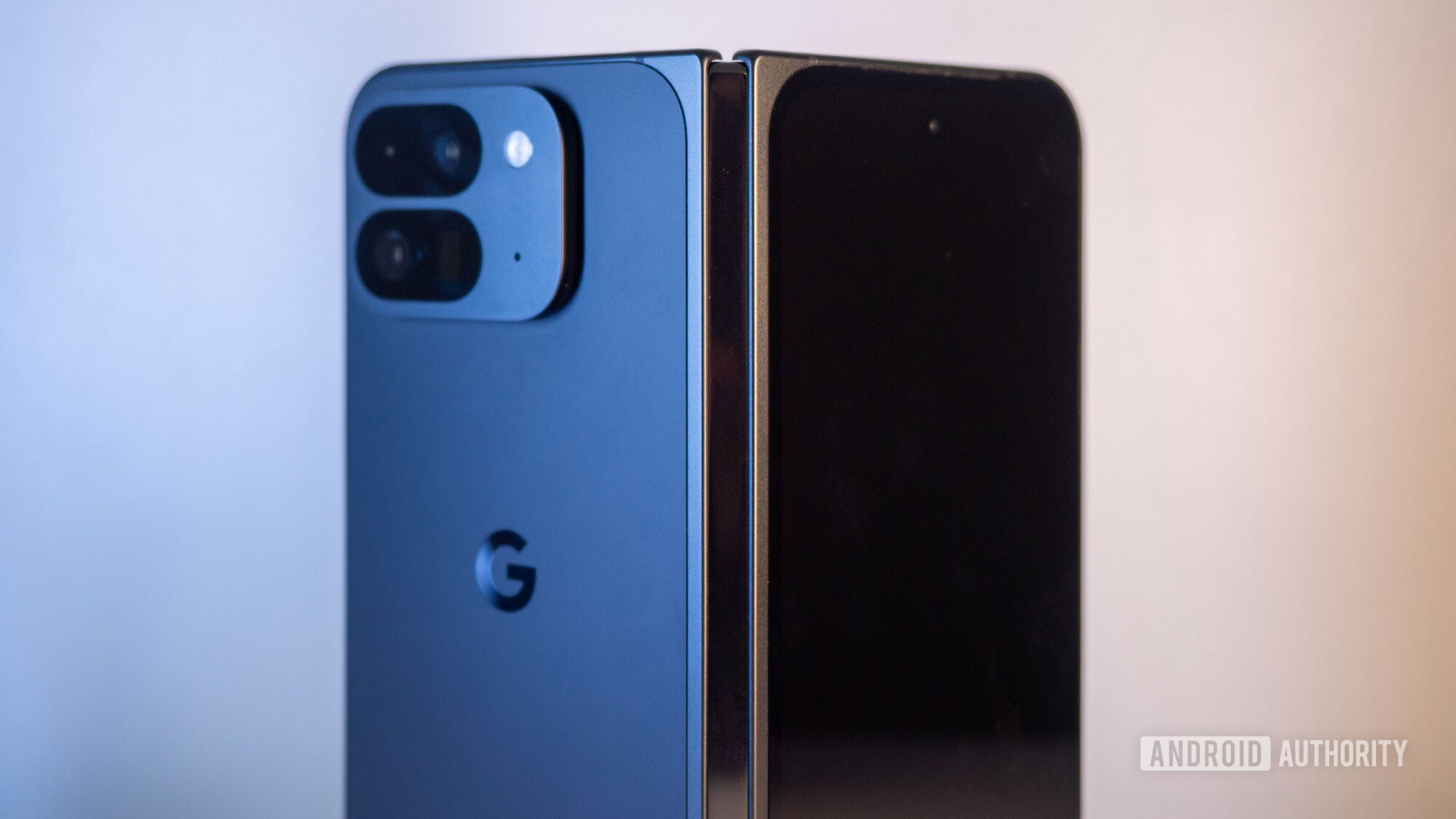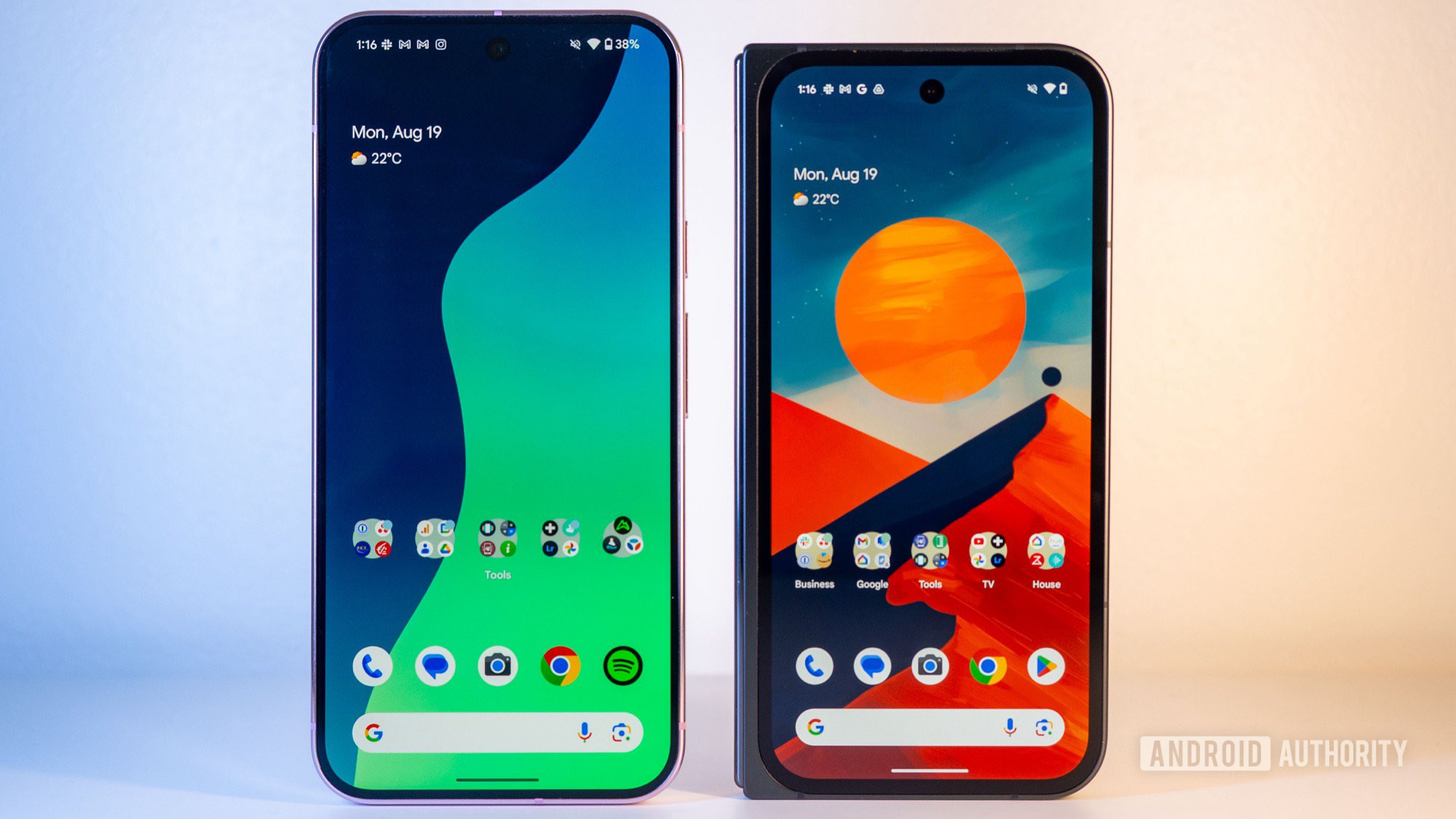Affiliate links on Android Authority may earn us a commission. Learn more.
Samsung could learn a thing or two from the Pixel 9 Pro Fold's 'phone-first' philosophy
Published onSeptember 4, 2024

- Google published a blog post detailing the design philosophy behind the Pixel 9 Pro Fold, aimed to make it feel more like a regular smartphone when folded.
- The “phone first” approach led to design choices such as a 20:9 aspect ratio display, a new hinge, and a much slimmer design.
- The blog post also discusses other design tweaks, such as a custom haptics driver, a smaller USB-C port, and re-engineered thermal architecture.
The Pixel 9 Pro Fold might be the least “Pro” Pixel this year, but that doesn’t mean it’s not a significant upgrade over its predecessor. To emphasize this point, Google recently published a blog post detailing the company’s design philosophy behind the new foldable. The post highlights a complete redesign focused on creating a thinner device that prioritizes a traditional smartphone experience when closed, a concept Google refers to as the “phone first” philosophy.
The post discusses how the design philosophy behind the Pixel 9 Pro Fold was driven by how users interacted with the original model. Claude Zellweger, Google’s director of industrial design, noted that many users frequently used the device in its folded state, leading the team to prioritize the “phone first” approach. This meant designing the Pixel 9 Pro Fold to function primarily as a smartphone, with the added benefit of foldable functionality.
This approach is reflected in the device’s 20:9 aspect ratio, which makes its outer display experience almost identical to the Pixel 9 Pro. Samsung’s team could definitely learn from this philosophy. Even after six years of iterations, Samsung’s Z Fold series still struggles to provide a comfortable smartphone experience when closed due to its ultra-narrow and extra-tall outer display.

Pixel product manager George Hwang emphasized the team’s focus on reducing the device’s thickness. “We knew when we made the second one, it had to be thinner,” Hwang stated. The Pixel 9 Pro Fold delivers on this goal, measuring just 5.1mm deep when open, making it thinner than its predecessor and even Samsung’s Galaxy Z Fold 6.
Hwang acknowledged the challenge of making the phone thinner while still upgrading its features. A new multi-alloy steel hinge, covered in high-strength aluminum alloy, plays a crucial role. It not only snaps shut securely but also opens fully flat, improving usability. Google also ensured the hinge retains the satisfying tactile feel of the original Pixel Fold while also being more durable.
Other design tweaks contributing to the slimmer profile include a custom, thinner haptics driver, a smaller USB-C port, and all-new speakers. A re-engineered thermal architecture with an all-new vapor chamber and graphite thermal spreader has also been added to address the heat dissipation challenges that come with a thinner device.
The pursuit of thinness hasn’t been without compromises, though. While Google claims to have incorporated the best possible cameras given the space constraints, it’s no secret that the Pixel 9 Pro Fold’s camera hardware is notably less powerful than its non-folding counterparts. It can be argued that Google is just following the trend set by other foldables in this regard.


As for how all this design innovation on the Pixel 9 Pro Fold stacks up in the real world, we’ll let you know soon in our detailed review. The Pixel 9 Pro Fold is now available on the Google Store, starting at $1,799 for the 256GB variant.